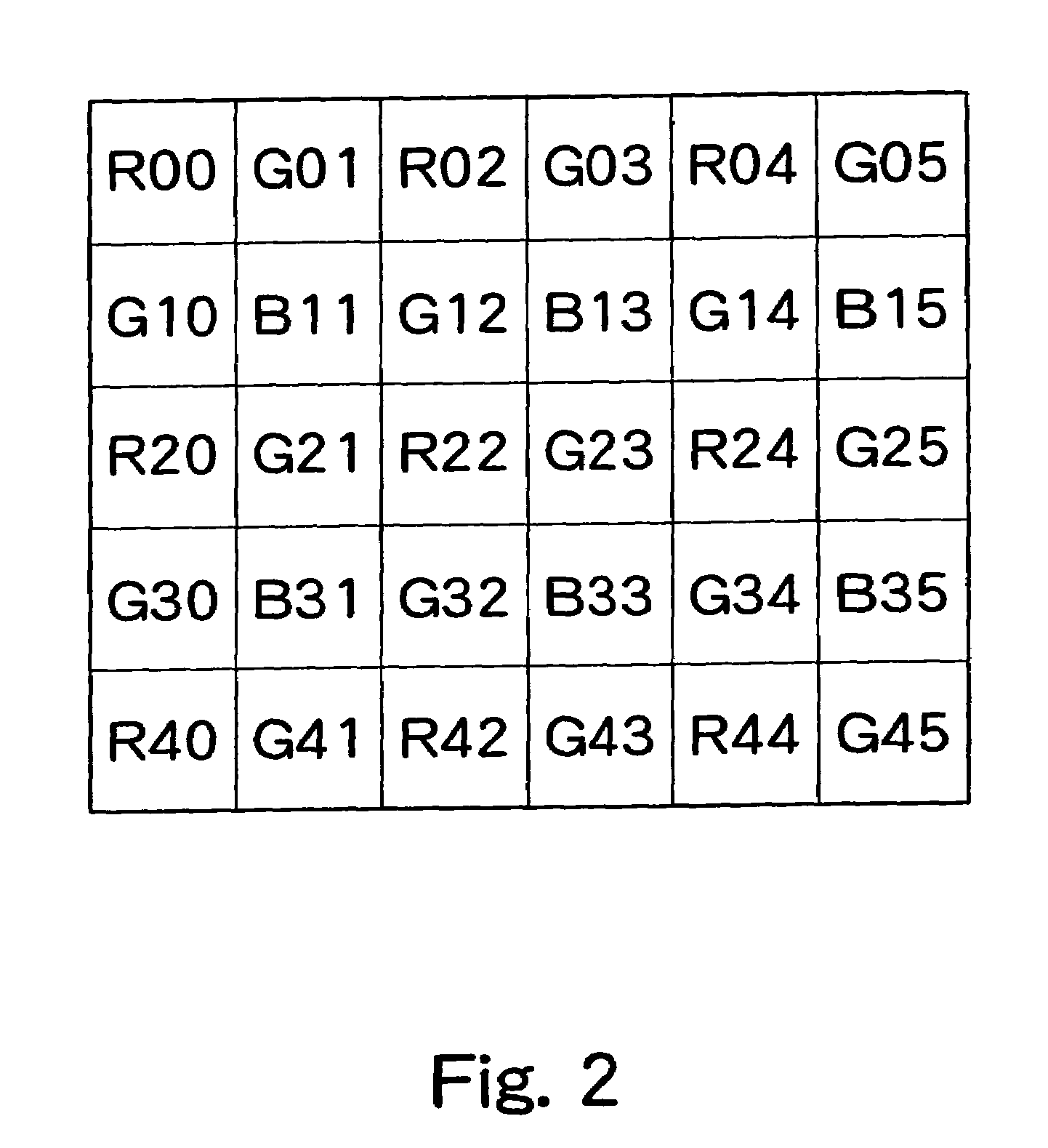Pixel defect correction device
a defect correction and pixel technology, applied in the field of pixel defect correction devices, can solve the problems of reducing the size of the photodiode and the v transfer path increasing the probability of defect generation, white flaw, and black flaw
- Summary
- Abstract
- Description
- Claims
- Application Information
AI Technical Summary
Benefits of technology
Problems solved by technology
Method used
Image
Examples
Embodiment Construction
[0104]Preferred embodiments of the present invention will now be described referring to the drawings. FIG. 1 shows an overall structure of a digital camera incorporating a pixel defect correction circuit according to a first preferred embodiment of the present invention. An optical system including a diaphragm 50 and a lens 52 guides light from an imaging target to a CCD 54. A light shielding filter 51 may be placed in front of the diaphragm 50. The CCD 54 converts the light from the imaging target into an electrical signal corresponding to the amount of light and supplies the electrical signal to a CDS (correlated double sampling) 56. The CDS 56 samples the image signal and supplied to an A / D 60 through an amplifier (AMP) 58. The amplifier (AMP) 58 adjusts a gain of the image signal. The A / D 60 converts the sampled image signal into a digital signal and supplies the digital signal to an image memory 62 which functions as a frame memory. Operations of the CCD 54, CDS 56, and A / D 60 ...
PUM
 Login to View More
Login to View More Abstract
Description
Claims
Application Information
 Login to View More
Login to View More - R&D
- Intellectual Property
- Life Sciences
- Materials
- Tech Scout
- Unparalleled Data Quality
- Higher Quality Content
- 60% Fewer Hallucinations
Browse by: Latest US Patents, China's latest patents, Technical Efficacy Thesaurus, Application Domain, Technology Topic, Popular Technical Reports.
© 2025 PatSnap. All rights reserved.Legal|Privacy policy|Modern Slavery Act Transparency Statement|Sitemap|About US| Contact US: help@patsnap.com



